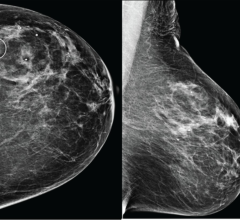July 26, 2012 — The Society of Neurointerventional Surgery (SNIS) 9th Annual Meeting opened with study results which show that patients presenting with ischemic stroke may be successfully treated with endovascular or minimally invasive therapy well beyond the eight-hour treatment window today considered standard by most neurointerventional practitioners. The multi-center study evaluated the use of computed tomography (CT) perfusion imaging, regardless of time from symptom onset, in selecting patients for endovascular treatment, a technique which utilizes devices or clot-busting drugs directly at the problem site in the brain to dispel clots and restore blood flow. CT perfusion imaging is used in combination with other imaging techniques to determine which areas of the brain are irreversibly injured from a stroke, and which areas are still alive, but at great risk.
Study data collected from the Medical University of South Carolina (MUSC) in Charleston, Swedish Medical Center in Denver, Colo. and the University of Florida in Gainesville, show that out of 247 patients for whom perfusion imaging was used, 42.5 percent showed a 90-day modified Rankin Scale score (a measure of the degree of disability in people who have suffered a stroke) of 0 to 2 percent (considered a good functional outcome), which is comparable to results from all other significant trials to date which evaluated endovascular therapy conducted under eight hours. Notably, this latest study showed no significant difference in treatment outcomes between patients treated under eight hours (42.8 percent) and those treated over eight hours (41.9 percent). Additionally, immediately following treatment, restoration of blood flow was accomplished in 76 percent of patients, with a higher success rate in those treated over eight hours (81.1 percent) as opposed to those treated under eight hours (71.7 percent). All study subjects underwent mechanical thrombectomy, or treatment utilizing devices to re-open the affected vessel.
Study data was collected from 2007 to 2011 from patients with a mean age of 65.9 presenting with an average score of 18 on the NIH Stroke Scale (NIHSS), a standardized measure used to clinically evaluate the degree of impairment of a stroke in such areas as consciousness vision, speech, movement, language and sensation. Anyone with an NIHSS score of less than 8 was excluded from the study. The overall mean time from symptom onset to treatment start was 8 hours, with an average time to treat of 4.8 hours in the group of patients treated under 8 hours, and 16.4 hours in the group treated over eight hours. The 90-day mortality rate for study subjects was 23 percent. The safety and efficacy data showed that utilizing an imaging based approach to patient selection is comparable to benchmark data established in all of the time-based clinical stroke trials to date.
Currently, neurointerventional practitioners primarily use devices to restore blood flow in stroke patients as they can more immediately dispel the clot while drugs often take time to dissolve the occlusion and pose the added risks of bleeding. Treatment with devices is accomplished by maneuvering the instrument through a catheter inserted into the groin area and threaded through the arteries to the site of the clot. The first device utilized to accomplish endovascular stroke treatment was U.S. Food and Drug Administration (FDA)-approved in 2004, and since that time many other iterations have made their way into the neurointerventionist's treatment arsenal.
For more information: www.snisonline.org


 December 10, 2025
December 10, 2025 









